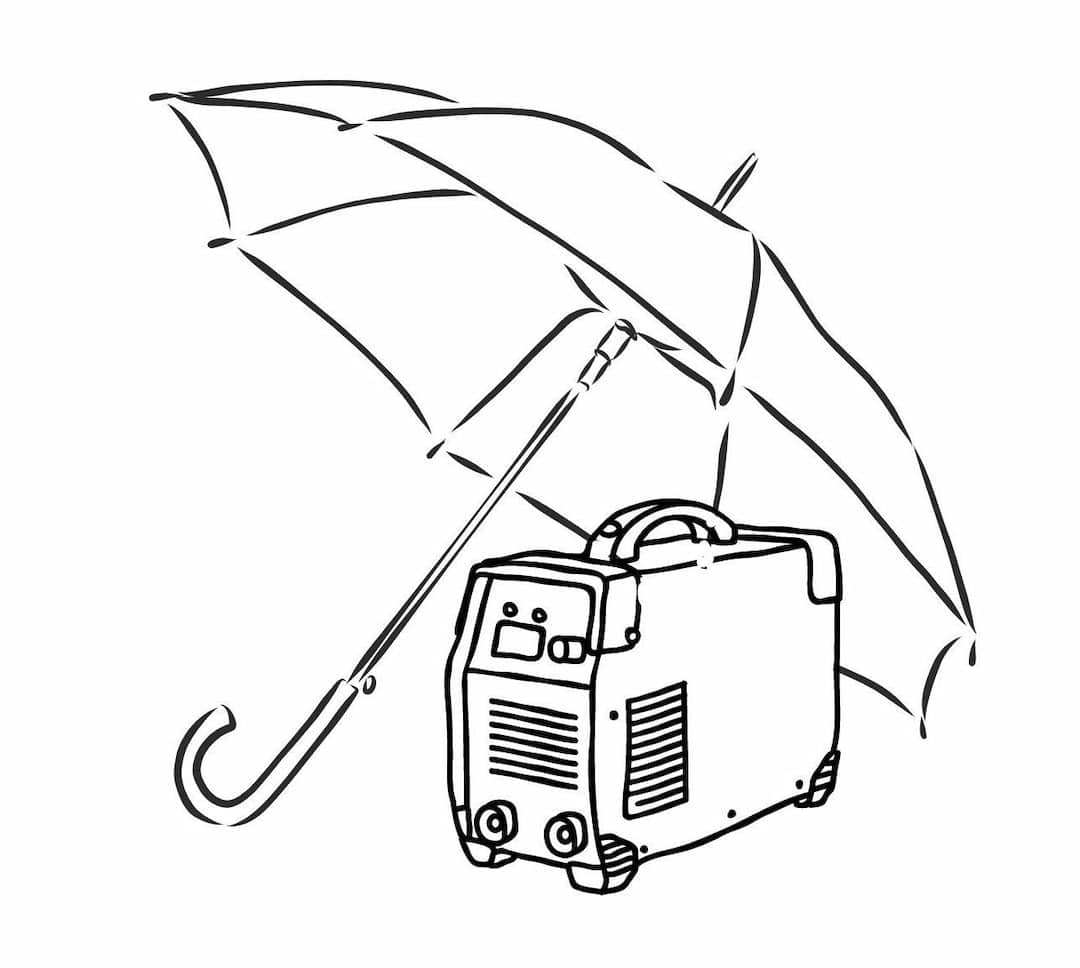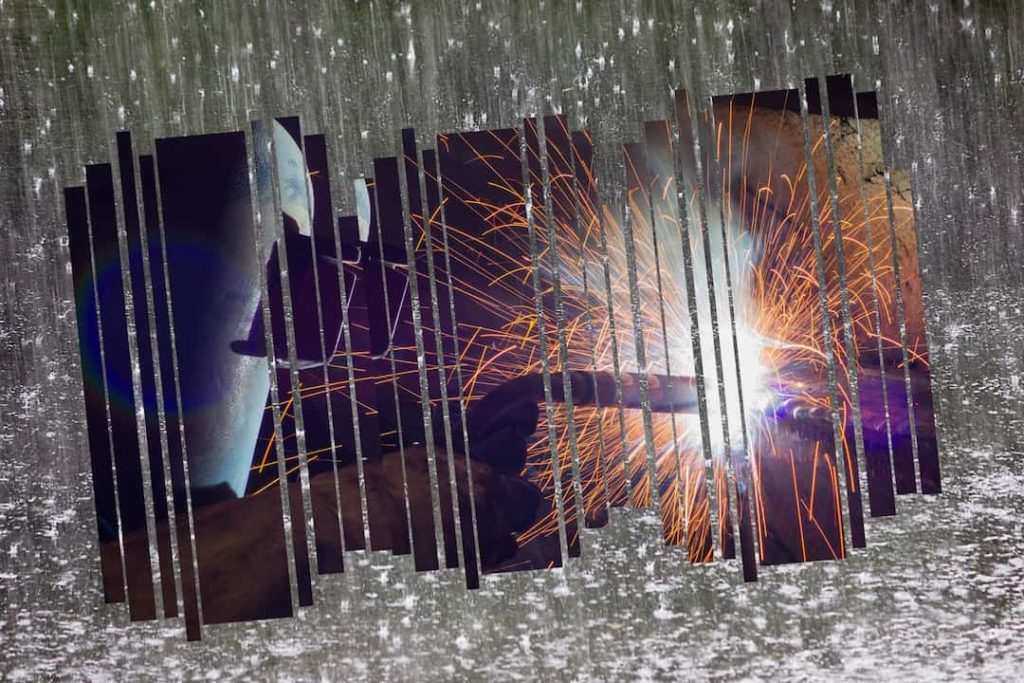Are you a welder whose work often takes you outdoors? If the answer is yes, then you know all too well that inclement weather – such as rain - can put a real damper on your day, not to mention your productivity. But does this mean that wet conditions are an ironclad no for welding in the rain? Not necessarily. Read on to find out what welding in the rain entails and whether it is possible and to know the answer of "Can you weld in the rain?".
Table of Contents
Key Takeaways
- Welding process in the rain is not recommended as moisture can cause welding defects and negatively impact the quality of the weld, and rain can make the welding arc unstable and work surfaces slippery and that increases the risk of accidents.
- To safely weld in the rain, it is important to have proper personal protective equipment like waterproof clothing, insulated welding gloves, and non-slip rubber boots as they don't conduct electricity.
- Creating an enclosed workspace or using water-resistant materials can protect equipment and materials from water damage.
What is welding, and why is it important?
Welding is the process of joining two pieces of metal together by melting them at high temperatures and then allowing them to cool and solidify. This technique has become one of the most critical methods used in the manufacturing industry for everything from aircraft to automobiles. Welding is essential because it allows for the creation of strong bonds within and between metals. It's also crucial for repairing damaged parts and structures.
With such a high demand for welding, many individuals are curious about its limitations. One often-asked question is whether or not you can weld in the rain. Unfortunately, the answer is no. Moisture can cause welding defects and impact the quality of the weld. Welding is a skill that provides an essential service, but it's crucial to ensure the environment is suitable before starting.
Dangers of welding in the rain
Welding in wet conditions poses serious risks for welders, and adding a welding machine, an electric welding arc, and other electric welding equipment can only increase those dangers. Even with extra caution and attention to safety measures, accidents, and injuries can still occur if welders are not properly protected from the elements.
The slippery surfaces created by the rain can make it harder for welders to maintain their balance and footing and reduce the work area's visibility. Furthermore, stray electrical currents from rain can cause arc flashes and electrocution if proper precautions are not taken.
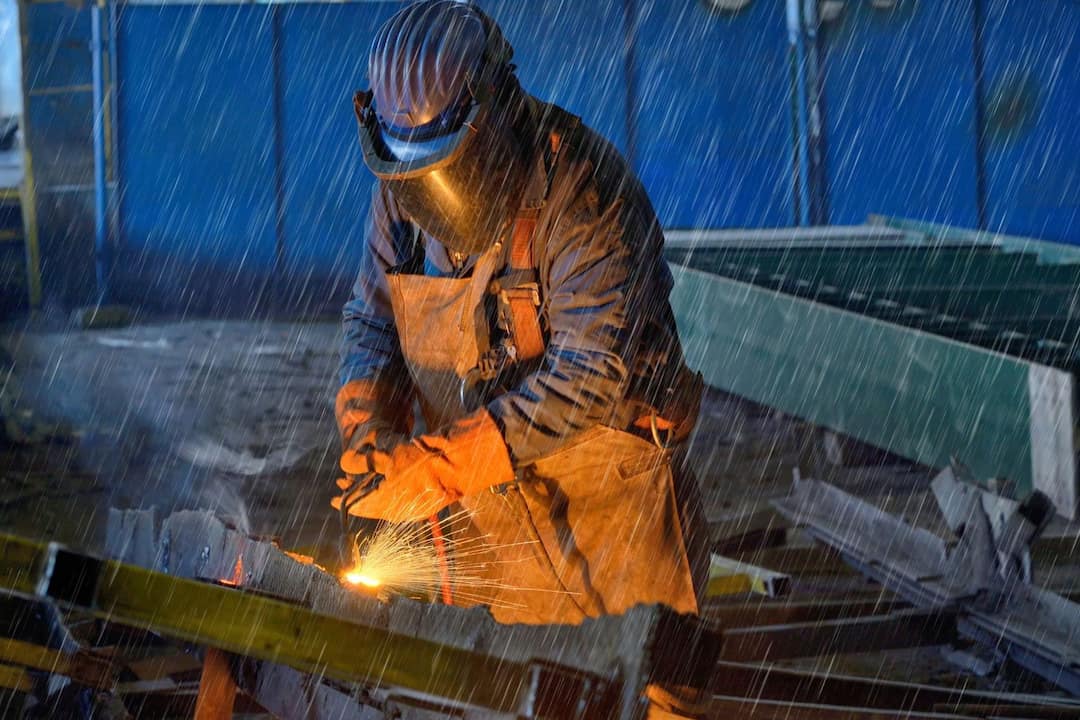
Tips for staying safe when welding in the rain
Welding is a crucial part of many construction projects, but what happens when it starts to rain? Safety is paramount when dealing with welding machines, welding arc and other welding equipment, especially in unpredictable weather conditions. Rain can affect your visibility and create hazardous environments for welders. Wear waterproof clothing, insulated gloves, and non-slip boots to ensure safety while working in the rain.
Clear the workspace of potential hazards, and if possible, set up a temporary shelter to keep yourself and your welding machines dry. Always double-check your surroundings and be alert, as wet surfaces can increase the risk of slips or falls when working with welding arcs and other welding equipment. With these tips, you can safely tackle your welding project, no matter what Mother Nature throws your way.
Types of protective equipment you need for welding in the rain
When it comes to welding in the rain, you might be wondering if it's even possible. The good news is that you can weld wet metal with the right protective equipment and a welding machine without any problems. First and foremost, you'll need a welding helmet with a clear lens to help you see what you're working on despite the raindrops. You should also wear proper welding boots, as this will help protect your feet from hot metal and any debris that may be created during welding.
A pair of waterproof gloves with a protective coating is also essential for handling hot metals safely when welding in the rain. A waterproof jacket and pants will also help keep you dry and comfortable throughout the job. Ensuring that you have the right protective equipment, including welding boots, will help you weld in the rain and do it safely.
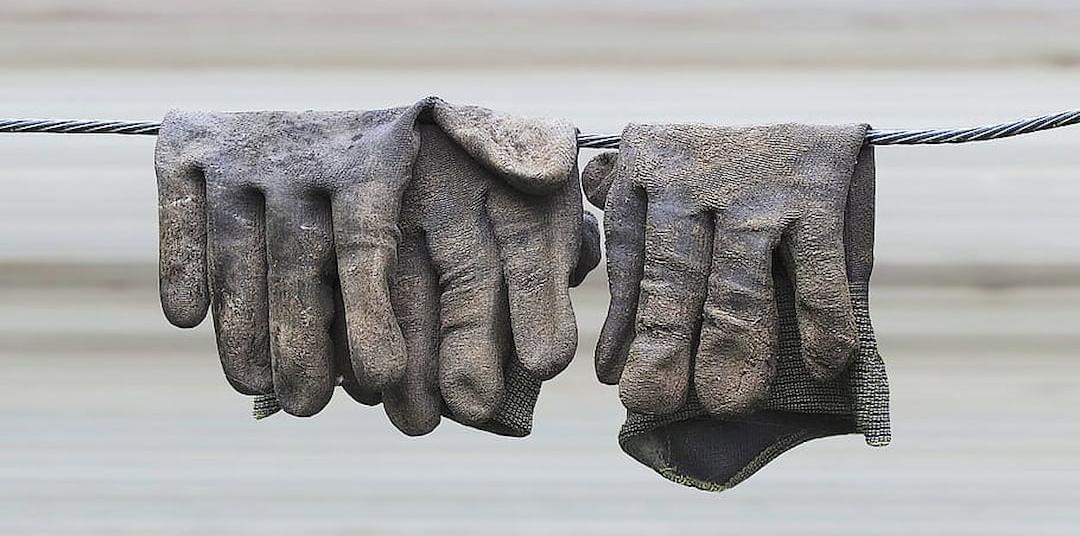
Different methods for protecting your work area from water damage
As a welder, taking the necessary precautions to protect your work area from water damage is important. One way to do this is to build a roof or canopy over your workspace to shield your equipment and materials from the elements. Also, you should use water-resistant materials for your equipment and surrounding surfaces whenever you can.
Applying water-repellent sprays or coatings can further protect your gear from water damage. When welding in wet conditions, you should use a shielding gas, and wearing proper welding boots to protect yourself is always better. By taking these precautions, you can weld safely in the rain without worrying about the effects of water damage.
How to prepare and clean up after welding in the rain
Welding outdoors can be a tricky endeavor if not done with proper preparation. Shielding gas must be used, and precautions should be taken to avoid electric shock due to wet equipment or even underwater welding. One should use a waterproof welder's helmet, gloves, and jacket to ensure safety. Also, setting up an enclosed space or tent to protect your equipment and yourself from the rain is essential. After welding, dry off all welding equipment before it can rust and properly dispose of any materials that may have become soaked in the rain. With these tips, you can confidently weld in rainy conditions without fear of damaging equipment or endangering safety.
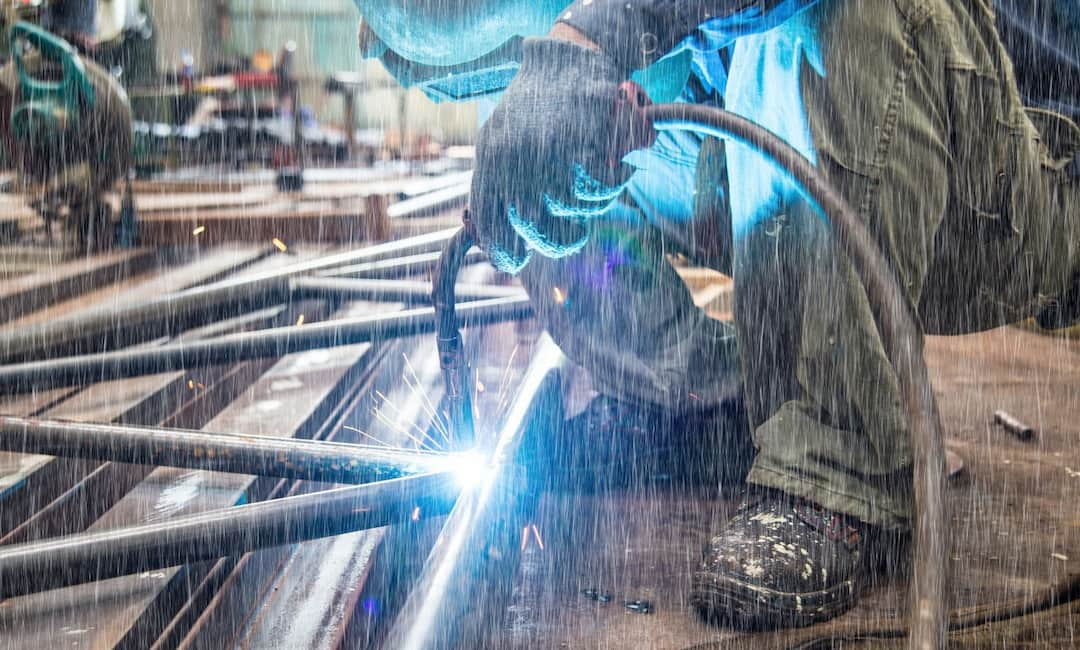
FAQS
What are the dangers of welding in the rain?
Welding in the rain can be dangerous for several reasons. Moisture can create a greater risk of electrical shock, as water is a good conductor of electricity. Wet conditions can also lead to slippery surfaces, increasing the risk of falls and other accidents. The presence of moisture can also negatively impact the quality of the weld, leading to defects or even weld failure. Additionally, rain can cause visibility issues, making it difficult for the welder to see what they are doing, which can increase the risk of errors or accidents. Overall, welding in the rain is not recommended and should be avoided whenever possible to ensure the safety and quality of the weld.
What are the different types of welding?
There are several welding techniques, each with advantages and applications. The most common types of welding include:
MIG welding (Metal Inert Gas): uses a wire-feeding gun to feed a consumable wire electrode into the weld pool, which melts and joins the base metals together.
TIG welding (Tungsten Inert Gas): uses a non-consumable tungsten electrode to produce the weld, and a separate filler material is often added to the weld pool.
Stick welding (Shielded Metal Arc Welding): uses a consumable electrode coated in flux to create the weld.
Flux-cored Arc Welding (FCAW): uses a wire-feeding gun with a hollow electrode filled with flux to produce the weld.Laser welding: uses a focused laser beam to melt and join the base metals.Gas welding: uses a flame from burning fuel gas to heat the base metals and melt them together. Each type of welding has its strengths and weaknesses, and choosing the right welding technique depends on the specific application and materials used.
What are the benefits of welding in the rain?
Welding in the rain is generally not recommended due to safety concerns. Wet conditions can create a greater risk of electrical shock, and the presence of moisture can lead to poor weld quality or even weld failure. However, in some cases, welding in the rain may be necessary for specific applications or job requirements. In those cases, precautions such as using waterproof welding gear and ensuring a dry work area should be taken to minimize risks. Nonetheless, it is generally recommended to avoid welding in the rain if possible to ensure the safety and quality of the weld.
Conclusion
Welding in the rain presents several safety challenges and should be avoided. But if you decide to solder in the shower, ensure you stay safe by taking all the necessary precautions. Always wear safety gear, use tarps or other waterproof sheets over your work area, and be especially vigilant to prevent electrical accidents.
Lastly, remember that clean-up after welding in the rain is significant as it can help reduce water damage and promote better welding results. Remembering these tips, you can successfully practice welding even when it's raining outside!
